meringues and coffee . garden glimpses . frauds
All week I gather thoughts for this newsletter. They are notes. Here are this weeks notes. Some of these notes have nothing at all to do with other notes. some notes are really good. But there you are
I write to understand. To untangle ideas that should be clear to us ordinary people. After all, it is us, the ordinary folk, who carry change forward. We are the power.
I am not here to lecture or tell anyone how to be. That’s not me. Instead, I want to start conversations. Share what I learn as I learn it. Whether it’s coffee or reading aloud, I’ll share in real time, messy, honest, current and open.
Please hit LIKE as you go past. We all love a good like - right? And as I said earlier in the week - no Like goes unLoved. Your Like leads us to your page and your work and your other Likes. 👍 so leave a ❤️ so I can thank you.
Of course a comment would be amazing too - how do you LIKE your coffee?! ☕️
All week I gather thoughts for this newsletter. They are notes. Here are this weeks notes. Some of these notes have nothing at all to do with other notes. But that is how our subconscious works stuff out. Right? We need to turn our heads up and look over and look hard and think about stuff then act.
Getting out of my own damned way.
I always thought I was a fraud - in every job I have had. I researched more than anyone else. Arrived earlier. Left later. Took all the difficult cases. Became an expert wherever I landed. Because I was afraid - afraid that because I was a woman and a mother of five and a divorced woman to boot and tall with Paul Newman eyes and all legs and hair so they told me. I did not feel that I appeared serious. But I was. Dead serious about every job I have every done. I thought I had to work harder. Stronger. Bitchier. I Imagined I was judged at every juncture.
I would slide around doors. Try not to take up too much space in a room. I stayed thin and never asked for more than I believed I was worth. Pay attention all the time. Never say no. Never miss a beat. Anyones beat.
I wore high heels and black all the time. I figured if I was taller I had more authority. I did not walk the halls, I prowled them. I consciously devised a persona that terrified people into silence. I was always first to work, left late, I took my kids to work with me if they were sick, I would never have shown the weakness of being a mother. A single mother. By taking a day off.
But I did not need others to tell me I was not good enough I believed I was tricking - I had already distrusted myself. I had already told myself I was not good enough.
I was my own bully.
I bullied myself.
I was prejudiced against myself.
Do you know anyone like that?
The world opened to for me when I got out of my own damned way.
Dogs and cats in gardens mean multiple poo pile pick ups. Sigh. And the dog mama is getting too large with child to be on poo patrol. So I guess this is another handmaiden chore for Granny Nanny in Waiting.
Coffee came up a lot this week.
Coffee is a popular subject. And a popular drink. This short list of how popular was compiled using Chat GPT and Google.
United States: In 2024 Americans consume approximately 1.62 billion pounds of coffee annually, averaging about 3.8 pounds (1.72k) per person each year. 
Australia: In the 2024 financial year, domestic coffee consumption in Australia reached around 2.1 million 60-kilogram bags, equating to about 3.84 kilograms (8.7pounds) per person annually. 
Globally, people consume around 2.25 billion cups of coffee per day, while Brazil remains the largest producer, supplying over a third of the world’s coffee.
So yeah. Popular.
My most read note this week:
Which took me to coffee. Coffee.
Do you buy coffee or make it yourself. Do you have a home coffee maker? Is it a French press or an espresso maker or an American drip coffee machine or a cafetierre or do you buy your coffee on the way to work. Is your coffee just coffee or do you add milk or a heaped helping of flavoring and sugar or that creamer that comes in an orange container?
Or do you go to the cafe ( my favorite place for writing my notes) or maybe Starbucks drive through on the way to work.
Have you noticed that we have a kind of ritual built into our coffee drinking. Your ritual interests me. Mine is honed by tea drinkers.
When I was a child you could buy tea in tea pots in the cafes - and the cafes were not little intimate cafes like the ones nowadays, these great big cafeterias the kind with piles of tables and chairs and lunch ladies in hair nets. They sold sally lunns and pies with mashed potato and everybody’s mother went there when she was out doing the shopping. They were big and bright with art deco windows and high ceilings, and loud with clinking teacups and little plates of cakes and cutlery because we all used knives and forks, one in each hand - and ate off real plates in those days. Many cafes in the world still do. Have real plates. But there was no coffee machine in our big art deco NewZealand cafeteria in those days. Those days being over fifty years ago now.
My Dad was the only person I knew as a teenager who drunk coffee. Dad would make himself a cup of coffee using spoonfuls of dried granulated coffee. He added cold milk to his orange coffee mug first then the coffee, stirred the milk and coffee together with a loud clanging whip of the spoon, then he added the boiling water. At the same time he would make Mum tea in a pot with tea leaves. Mum and her generation and her mother’s generation drank tea all day. They never drank a glass of water ever. It was all tea. Boiled water was safer I guess. Probably they drank tea ten times a.day. There was always a cup of tea on the go. A pot under a tea cosy on the bench. We were all allowed to drink tea but had to wait until we were fourteen to drink dad’s coffee.
I cannot tell you the origins of Dad’s dried ground coffee in a Greggs coffee tin and even though my principle area of study (for the last decade) has been organic wheat and flour, and sustainable self sufficiency, delving a little into coffee this week has been a nice change.
Google tells me:
The United States imports coffee from over 140 countries, with the top suppliers being:
Brazil and Colombia. Valued at approximately $3billion in 2023, accounting for a significant portion of U.S. coffee imports.
Other key countries include Canada (under threat of tariffs), Honduras, Guatemala, Nicaragua, Mexico (another question mark due to tariffs), Vietnam, and Indonesia.
Latin America, particularly Brazil and Colombia, provides about 80% of U.S. un-roasted coffee imports.
On the farm and out here in the city we have an espresso machine that has a built in grinder and here in Melbourne we are able to buy organic coffee beans from a local roaster.
There are just way too many chemicals in conventional coffee for me to feel comfortable drinking that on a daily basis. But I am not about to go without coffee altogether! So we buy organic in both kitchens.
Though organic means different things to different countries at least we are trying, right. It is all we can do. Try to get it right. And you are not alone in that endeavour -if you are here and reading my notes then you are trying to live gently on this good earth too.
Although we work hard to grow as much of our own food as possible and be as chemical free and sustainable as possible and self sufficient as possible there is only so much we can do and I think it is important to give yourself permission to buy coffee and tea and flowers and avocados out of season sometimes.
We try to support the farmers who grow organic coffee and I wish I knew the ones who were walking their coffee beans to market down the mountains in sacks on the backs of mules. I would like to buy from them!
As
said in her note “ Next time you have a cup of Colombian coffee, just remember that those beans are picked by hand and on the side of an impossible to climb mountain .. “Conventional coffee often contains a variety of chemicals, including both naturally occurring compounds and synthetic additives used in farming practices. Other than the normal suspects of pesticides and herbicides and fungicides - there are the additional chemicals to combat mold in the coffee during transport and storage.
I buy organic coffee and I hope it is correctly labeled and has less of a synthetic chemical load. But because it is organic we need to be very careful to roast it at high temperatures, for longer ( dark roast) and store properly. Mold is organic too.
Ok. My research shows me some fun stuff about coffee.
Naturally Occurring Compound in coffee.
Caffeine: A stimulant. The reason you’re reading this list instead of napping.
Chlorogenic acid: Contributes to flavor and potential health - 🤔
Caffeic acid: An antioxidant. Antioxidants are like tiny bodyguards, fighting off rogue molecules (a.k.a. free radicals) so your cells don’t age faster than they should.
Polysaccharides: Complex carbohydrates because even your coffee needs fuel.
Proteins: Essential for nutritional value.
Fats and waxes: Contributes to texture and flavor, giving your coffee that smooth, velvety texture.
Minerals: Include potassium, magnesium, iron, zinc and manganese (in trace elements like a mini-mini multivitamin, but tastier).
Volatile compounds: Such as furans, phenols, and olefins, which contribute to coffee's aroma. The little magic molecules that make coffee smell like heaven (and your car smell like hope).
Is coffee risky to drink? The media would have it so. The most harmful naturally occurring organism in coffee beans is mold which brings us to the study of mycotoxins. Here is where it gets sticky. As you know our coffee beans are transported in hessian sacks (so they can breathe) in big metal containers in the bottom of big ships (where they can’t breathe). It is this part of the food chain that bothers me. The humidity in the bottom of a big ship can be high. I know this for a fact because I have been down in the holds of these ships on occasion.
A story for another day - remind me.
Dampness and high humidity result in mold. Shipping has become erratic and a 3 month transport can take 4 or 6 if a ship is ordered to wait at sea - holding for a parking space in the port. If import inspectors checking for spoilage and those verifying paid duties (including tariffs) are short-staffed due to layoffs, a shipment of coffee in its metal container may sit on the wharf for a long time even after it has been out at sea for even longer.
And the label we see on our bag of coffee does not have a picking date, or a shipping date, or a packing date. It only has a use-by date determined by the packing date.
Another reason to try to buy local. A shorter food chain is safer for our food than a long food chain.
Let’s look at this toxin in the mould coffee beans they are all getting worried about. And this toxin in the right amounts can make you sick. Vomiting, diarrhea, respiratory issues in the vulnerable - the usual suspects. Though we are assured that ‘while mold contamination in coffee beans is not uncommon, the combination of processing methods and regulatory oversight helps maintain coffee safety for consumers’. (so let’s make sure the regulatory oversight department remains well staffed- yeah?).
Mycotoxins, such as ochratoxin A (OTA) and aflatoxins, can be present in coffee due to mold growth during processing and transport and storage and even after roasting and packaging. These toxins are more likely to occur in improperly shipped and stored coffee beans and can affect the quality and safety of the coffee. (good news) Caffeine acts as a mycotoxin inhibitor, which is why (bad news) decaffeinated coffee may have higher levels of mycotoxins. (Don’t get me started on decaf coffee) Roasting can reduce mycotoxin levels, up to 96% of them but not eliminate them entirely. Generally, mycotoxin levels in coffee are below safety limits, but proper roasting and processing and packaging and storage are crucial to minimize risks.
Just so you know: Mycotoxins (the nasty in mould) can be also found in your homes primarily in damp areas such as bathrooms, kitchens, basements, and around water leaks or high humidity spots, as well as on surfaces like walls, carpets, and ceilings where mould may grow. (Clean those microbial niches thoroughly).
So we can’t blame all the mould on coffee. Though it is best not to drink mould.
Go local. We can’t buy local coffee beans but we can (hopefully) buy from a reputable roaster and packer.
Find a local or online roaster who you can chat with.
Ask your roaster what temperature he roasts at:
To effectively reduce mycotoxins in coffee beans, roasting at high temperatures is crucial. Roasting at temperatures above 240°C (464°F) can significantly destroy mycotoxins. However, it’s important to note that while roasting can reduce ochratoxin A levels by 69–96%, very dark roasts (staying at a high temperatures a bit longer) are safer.
So yeah.
When you open your bag of coffee get your nose in there and give the coffee a good sniff. Your reliable nose will detect any mouldy notes, if you suspect mould on your first whiff - return that bag to the store and get your money back. The store needs to know.
Store your good coffee in the original bag in a cool, dry dark cupboard.
Shortly I will post this and go in for my second cup of coffee..
I make mine with whole creamy cows milk frothed by my espresso machine - Daughter makes her small pregnancy (occasional) coffee with oat milk. What do you have in your coffee?
And remember the families growing those coffee beans on the mountainside in Colombia. Respect the bean. A lot of hard work has gone into getting it into your cup.
Remember: We are all in this together. Making the best of a world that feels broken or in readiness for healing. Which-ever way you want to look at it. I know we do the best we can. That is good. Me too. And enjoy that coffee. All the way along that food chain people are employed. And that is a good thing. Just try to bring as much of that food chain closer to you. Keep your local economy strong.
Reading Robert Burns
To a Mouse
On Turning Her Up in Her Nest with the Plough, November 1785
Wee, sleekit, cow’rin, tim’rous beastie,
O, what a panic’s in thy breastie!
Thou need na start awa sae hasty,
Wi’ bickering brattle!
I wad be laith to rin an’ chase thee,
Wi’ murd’ring pattle.
I’m truly sorry man’s dominion
Has broken Nature’s social union,
An’ justifies that ill opinion,
Which makes thee startle,
At me, thy poor, earth-born companion,
An’ fellow-mortal!
…
If you want to read more of Robert Burns go to your grand-parents book shelf or HERE
On thinking about stuff we keep to ourselves.
So much I cannot say. This is a whole section all in itself. The section would be blank. Over-sharing to scare up Likes is not for me. The things we cannot say and should not say. Are real. So I will not say them but know that they are there - glistening under my cleansed words.
Just because we keep this other stuff to ourselves does not mean we do not feel these things. So try to remember this when you want to wack somebody for getting it wrong.
We just don’t know. What guilt they carry. And guilt makes people angry. We all carry it.
Be kind.
On a sweet note:
Meringues.
Now, this is my Mums recipe. A closely guarded family recipe.
She made us meringues at every birthday and before she got sick she would make pyramids of the meringues and pour melted chocolate from the top like a un- balanced badly behaved volcano. When she was unable to get out of bed to make them anymore she taught me how. Though I never reenacted the chocolate avalanche. That was pure Mum.
Meringues are fast, simple, and surprisingly easy to whip up.
You’ll need:
2 fresh room temperature egg whites
4 oz (1/2 cup) sugar.
1 teaspoon baking powder
That’s it. Told you it was simple!
Here’s how to make them:
Whisk the egg whites until they’re fluffy and standing tall.
Keep the mixer running and add HALF the sugar very slowly - slower than that, even. Super slowly. Beat until stiff peaks form.
Mix the baking powder with the rest of the sugar and gently fold it in with a rubber spatula. Be gentle—you’re adding air, not losing it.
Now, using a teaspoon and a little twist of the wrist, drop small mounds onto a buttered baking sheet. In more modern times I use baking paper.
Baking:
Pop them into the oven at 250°F (120°C) for 15 minutes.
Then, lower the heat to 150°F (65°C) and bake for another 2 hours. (If they start to brown, turn the oven down even further)
They’re ready when they slide easily across the sheet and feel crisp on the outside.
Mum’s family TIP:
Turn off the oven after baking and leave them in there. Don’t open the door. Put a note on the door so no-one else uses the oven or God Help Us opens the oven door. Don’t even peek. Let them cool completely inside the oven. When the window on the to the oven door is cold you can take the meringues out and store in an airtight container. Preferably glass because they look prettier.
In an electric oven, you can even leave them in the oven to cool overnight.
I had such trouble making these in a gas oven in Illinois in summer when the humidity is so high. But here in Melbourne, Australia in the autumn they cooked up beautifully.
If you would like to read additional pages of the kitchens garden (three times a week) go to thekitchens garden.com where I have been writing since 2011. I started out writing about the self reliant sustainable life on my farm on the plains of Central Ilinois and ended up writing about life. Lots of life.
Join me.
Go HERE ⇣ for the latest chapters in The Blue Castle. I am loading another reading in a couple of hours. After a little garden therapy. And a little/big dog walk. 🦋 .
Leave a comment or a like there too. ⤴ It means the world to me to hear from you.
Love Celi


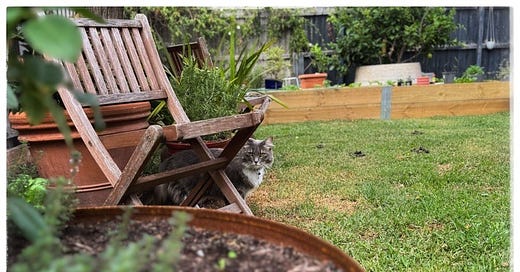


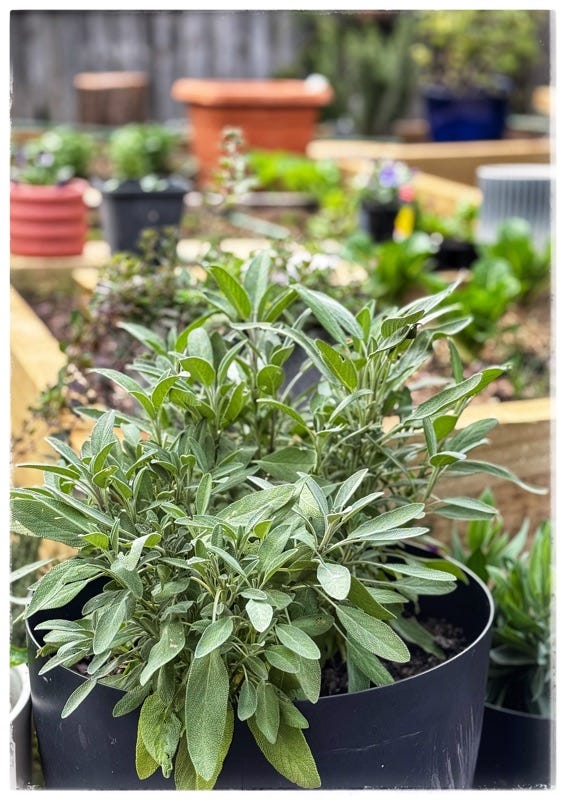
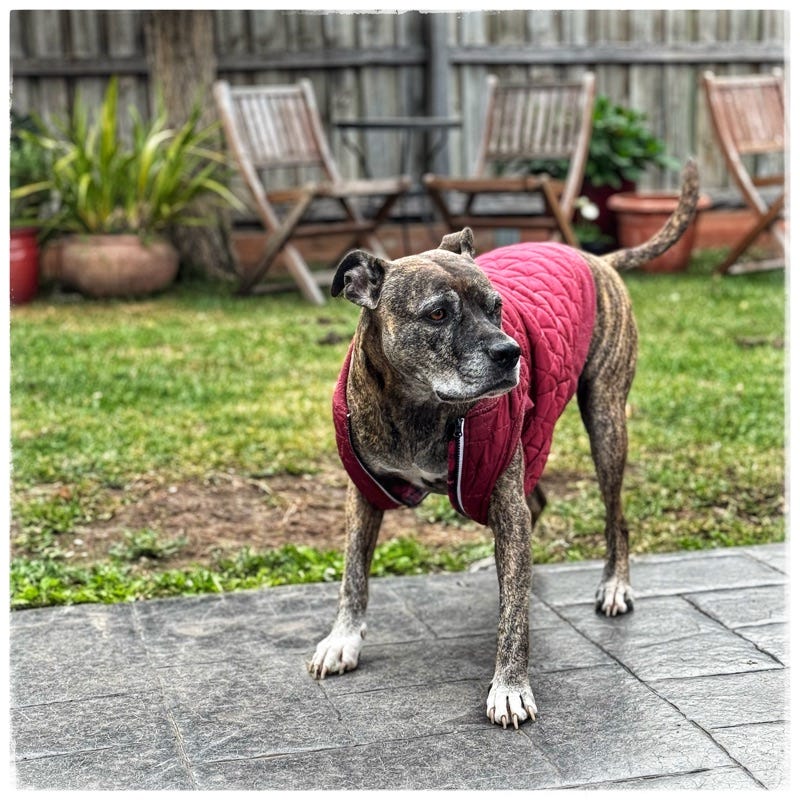
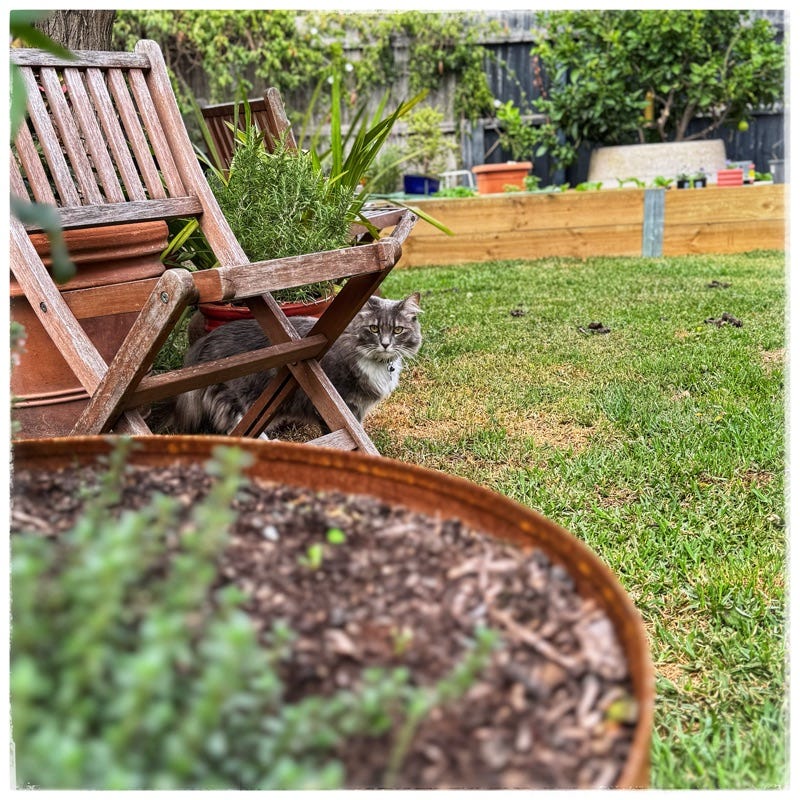
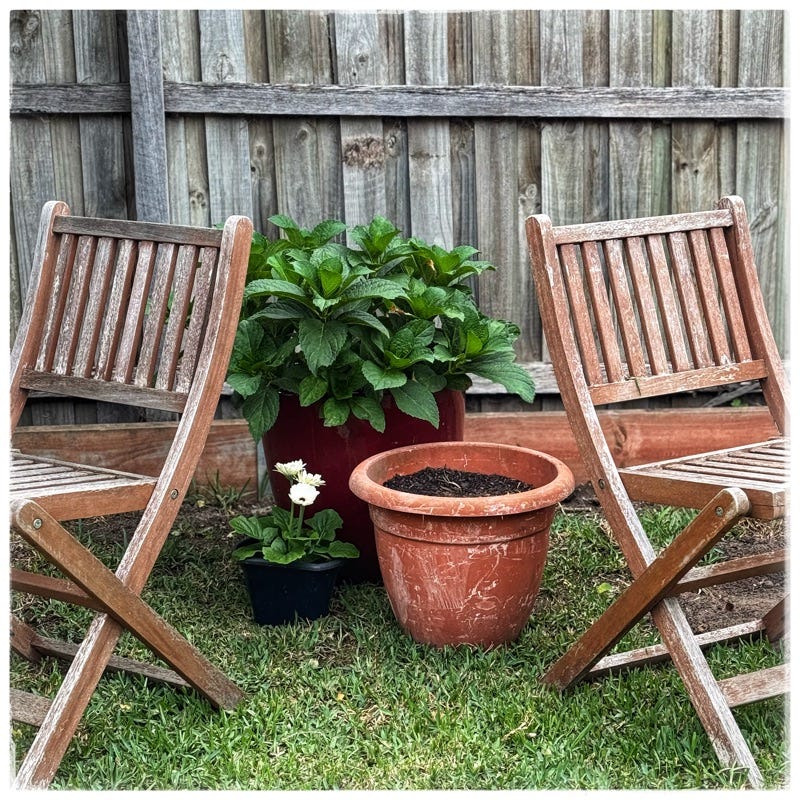

Did you know instant coffee was invented in NZ? I didn't until a month or so ago (and I've lived here a long time!). A man in Invercargill called David Strang...when I was young everyone in my family drank instant coffee, except my Nanna. I couldn't stand tea and drank instant all the time, now its the other way round :)
Thank you for sharing my note! I know my coffee is organic, and I drink too much of it! I didn´t realize Colombia and Brazil are the biggest exporters of coffee to the US. I do know that a lot of people here drink bad coffee because all the good stuff is shipped out! I am def spoiled now since I drink my own coffee or a local girls' coffee that we know, and both of us refuse to use pesticides. Unfortunately, most coffee farmers use some sort of pesticide.